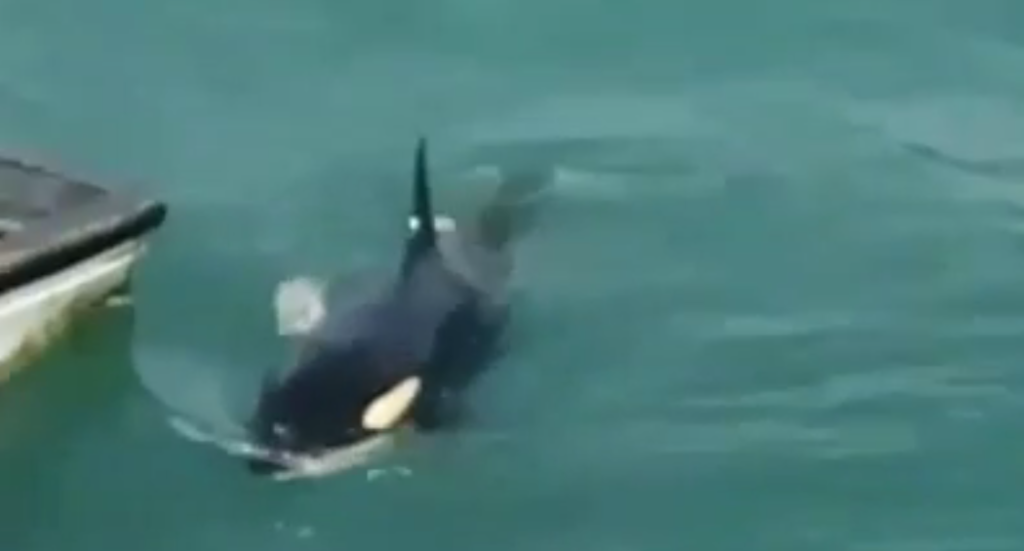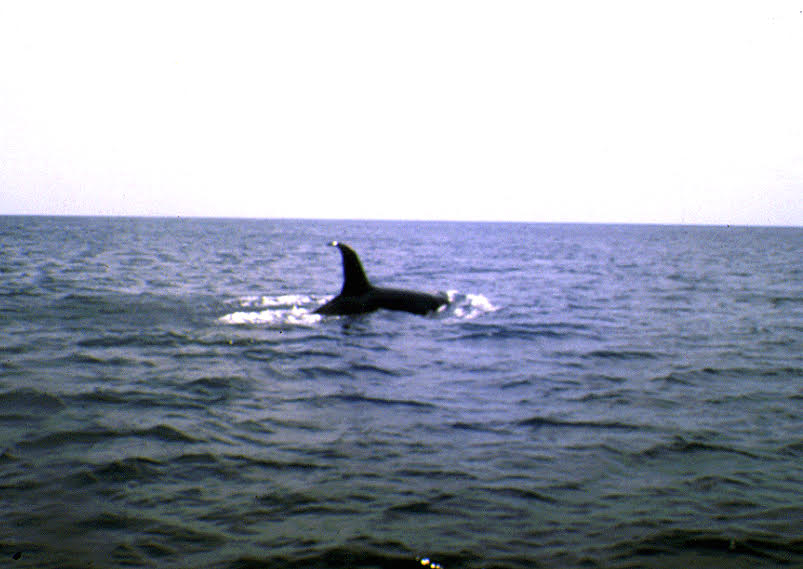Common Name: Killer Whale
General Description: The largest of the dolphin family, the Killer Whale is robust but streamlined. The head is rounded, with no beak. The dorsal fin is very tall and conspicuous, sickle-like in females and immature males, but triangular and up to 1.8 m tall in large males. The flippers are very large and paddle-like.
The colour pattern is easily recognisable. It consists of clearly defined areas of shiny black and cream or white. Generally, it is black above, with a light grey patch behind the dorsal fin called a saddle. Chin, throat, belly and undersides of the tail flukes are white. There is a white patch on each flank, connected to the white belly. There is also a white oval patch just above and behind each eye. In calves, the black areas are grayish and the white areas are tinged with buffy yellow for most of the first year.

Size: Adults: Killer Whale males are considerably larger than the females. They are about 9.5 m long and weigh up to 8 tons, whilst females are 7 to 8.5 m long and weigh 4 tons or more. Calves at birth, 2-2.4 m long.
Appearance At Sea: Extended family groups of Killer Whales live together and cooperate in hunting. A pod consists of 5-20 members, of which 20 per cent are adult males, another 20 per cent are calves, and the rest are females and immature males.
The breathing pattern involves a series of up to five short dives of 10-30 seconds each, followed by a longer dive of 1-4 minutes.

Found In: Killer Whales may be found in coastal as well as deeper waters. The diet of a Killer Whale is very diverse, including fish, squid, turtles, birds and dolphins.
World Distribution: The Killer Whale is very cosmopolitan, occurring in all oceans, from the tropics to the polar regions.
Could Be Confused With: Killer Whales are unmistakable if adult males are present in a pod. However, if only females and young are present in the pod there is a possibility of confusion with Risso’s dolphin and the False Killer Whale.
Diagnostic Features: At sea, tall dorsal fin, white eye patch and saddle.
Stranded Specimens:There are 10 to 12 pairs of large conical teeth in each jaw. The teeth are very strong and sharp, and interlock when the jaws close.



